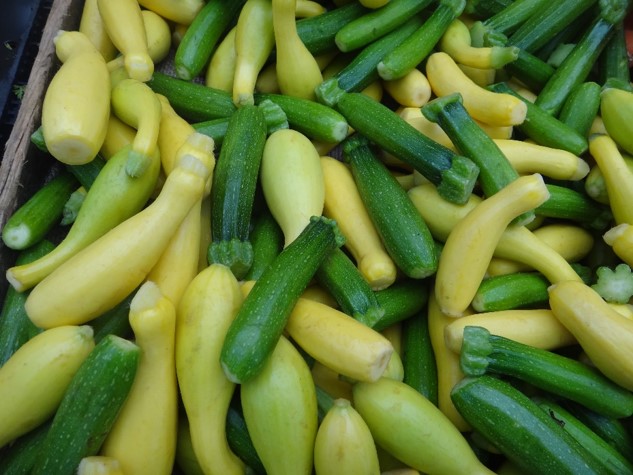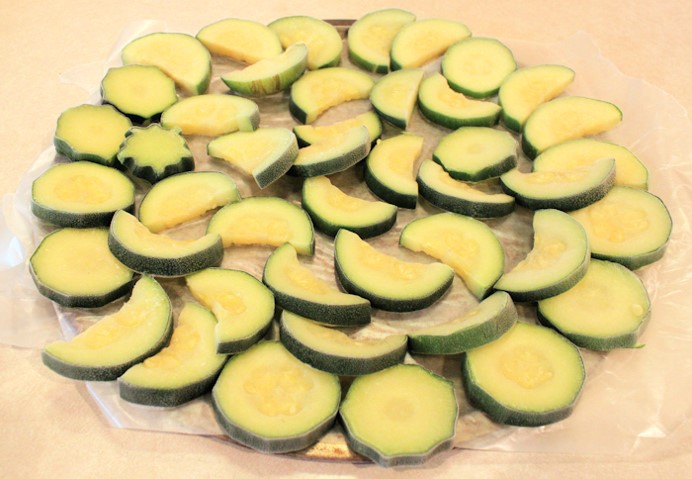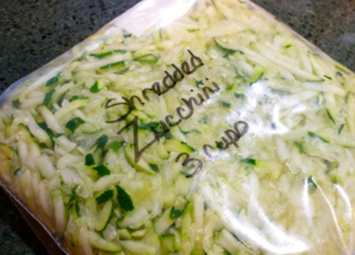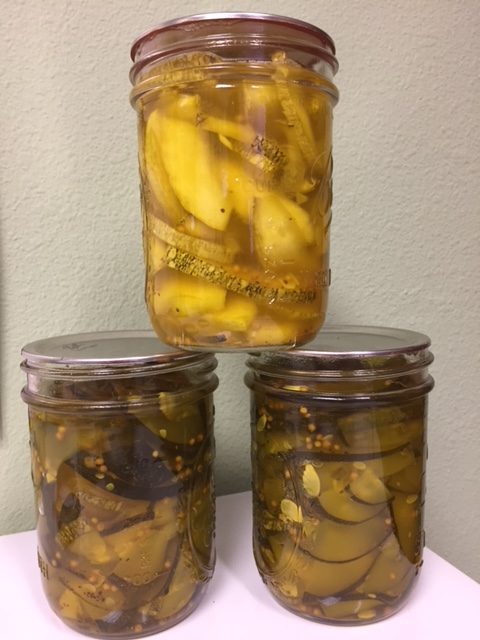 This is the time of year that many of us are seeing lots of produce ready for harvest in our gardens, community gardens or a surplus coming through food banks. Even as an experienced food preserver, having the time to can all of the produce is not an option for me. Sometimes I have just enough time to freeze, before the next batch is ready to pick. Many of the fruits I pick are in small batches. I freeze these until I have enough to make jams, jellies, pie fillings, or to dehydrate into fruit leathers or fruit bites. And having small batches of frozen fruits is also great for smoothies, fruit parfaits, and muffins.
This is the time of year that many of us are seeing lots of produce ready for harvest in our gardens, community gardens or a surplus coming through food banks. Even as an experienced food preserver, having the time to can all of the produce is not an option for me. Sometimes I have just enough time to freeze, before the next batch is ready to pick. Many of the fruits I pick are in small batches. I freeze these until I have enough to make jams, jellies, pie fillings, or to dehydrate into fruit leathers or fruit bites. And having small batches of frozen fruits is also great for smoothies, fruit parfaits, and muffins.
So how do you determine which method(s) of food preservation is best for YOU?
- Consider the amount of time and storage space you have available. Home food preservation can tie up the kitchen for a few hours, using nearly every available work surface!
- Do you have a trusted preservation instructions and a tested recipe? These are available free for the type of food you want to preserve and for the
 elevation at which you live.
elevation at which you live.
- Check with your State Extension service and/or the National Center for Home Food Preservation before preserving any food for the first time or if it has been awhile since you last preserved at home!
- Know your elevation and make the required processing adjustments needed. Remember, most recipes are developed at sea level, unless otherwise noted!
- Do you have the necessary equipment for the preservation method?
- Always read through the entire recipe before preserving a food product. Safely preparing, processing and storing the food will reduce the stress of preserving.

- Always read through the entire recipe before preserving a food product. Safely preparing, processing and storing the food will reduce the stress of preserving.
- How will you store the finished product?
- Canned foods require sturdy shelving in a cool, dry space that is out of direct sunlight. Protecting canned goods from freezing will prevent the chances of them becoming unsealed.
- Frozen foods require freezer space that is maintained at 0º F or lower and with a dependable energy source.
- Dried foods are best stored in a cool, dry, dark place that is moisture- and rodent-proof.
- How much will it cost to preserve the food and will you and your family like and use the finished product?
- What is the cost to purchase the unprocessed product and other ingredients and supplies?
- How much time and energy are involved in preserving the food?

- What will it cost to store the food?
- What are the short and long-term energy costs of canning, freezing and dehydration?
- Can a comparable product be purchased for less?
- Do you and your family enjoy/benefit from eating or sharing the product?
Always be sure to label home preserved foods with the name, date, and any special ingredients so that you and others can identify what is in the jar, container or plastic freezer bag.
Resources
 The ‘gold standard’ for tested home food preservation recipes has always been the National Center for Home Food
The ‘gold standard’ for tested home food preservation recipes has always been the National Center for Home Food
Preservation. The National Center for Home Food Preservation is your source for current research-based recommendations for most methods of home food preservation. The Center was established with funding from the Cooperative State Research, Education and Extension Service, U.S. Department of Agriculture (CSREES-USDA) to address food safety concerns for those who practice and teach home food preservation and processing methods.
![]() Here in Colorado, we have recently launched a new mobile app and website called Preserve Smart, intended to put preservation information and recipes at your fingertips–wherever you are!
Here in Colorado, we have recently launched a new mobile app and website called Preserve Smart, intended to put preservation information and recipes at your fingertips–wherever you are!
Other states’ Extension Services also have resources and recipes researched and tailored to their residents. A good example is University of Alaska Fairbanks Extension that has excellent fact sheets on preserving fish and wild game. Another excellent home food preservation resource that is readily available is Fresh Preserving!


Great post and resources that will be very helpful.
You are very welcome!